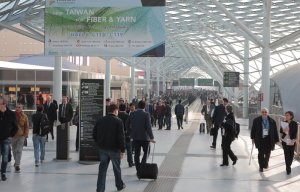
ITMA 2019 gears up for vibrant showcase
Wilhelm Langius, Head of Textile Industry Automation, explained why automation is the only possible way of the future.
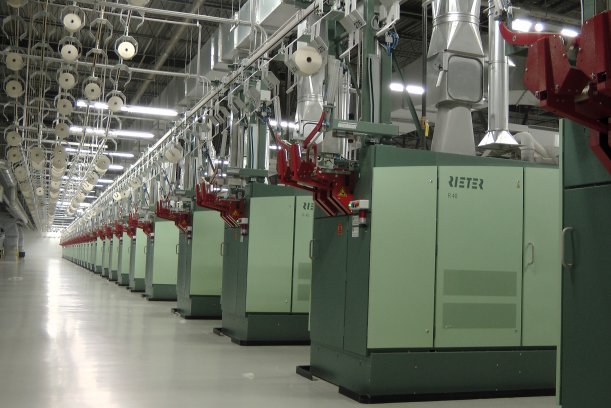
10th September 2015
Innovation in Textiles
|
Neuenhaus
 More and more spinning mills are relying on robots to do the heavy, unwieldy tasks formerly carried out by humans. For example, handling, transport, and even packaging of the bulky natural, chemical and carbon fibre bobbins is now largely performed by the innovative equipment from Neuenhauser Maschinenbau, a company founded in 1955 as a designing engineering and manufacturing concern.
More and more spinning mills are relying on robots to do the heavy, unwieldy tasks formerly carried out by humans. For example, handling, transport, and even packaging of the bulky natural, chemical and carbon fibre bobbins is now largely performed by the innovative equipment from Neuenhauser Maschinenbau, a company founded in 1955 as a designing engineering and manufacturing concern.
The most recent example is Welspun, operator of the largest manufacturing site of its kind in Anjar, India, where 55 km of track with 944 switches were installed just to transport the roving bobbins. 872 bobbin trolley trains travel on the tracks, guided and monitored by more than 1,000 sensors. The site offers a tantalising glimpse of how project Industry 4.0 - the fusion of information technology and machine building – will affect industrial production in the future.
Neuenhauser Maschinenbau can proudly boast of a total installed handling and packaging capacity of 10,000,000 bobbins per day. The company made its name within the industry with the AutoFlow system, which removes the bobbins from production stations and transports them for packaging entirely automatically.
At the ITMA trade fair in Milan in November, Neuenhauser will present new automation solutions for the automatic collection of packages from spinning machines and for palletizing and packaging. Wilhelm Langius, Head of Textile Industry Automation, in an interview to VDMA’s Nicolai Strauch, explained why automation is the only possible way of the future.
WL: “… Yes indeed. In the last few years, the Indian market has embraced automation in spinning plants very successfully. We have already completed more than 20 projects for various Indian customers in this segment. Last year, Neuenhauser succeeded in winning its largest order to date for roving bobbin and package transport systems with palletisation, from Welspun. This is one of the largest, most modern ring spinning mills in the world. The customer wanted a completely automated, "contactless" material transport system. Final acceptance was completed just a very few weeks ago.”
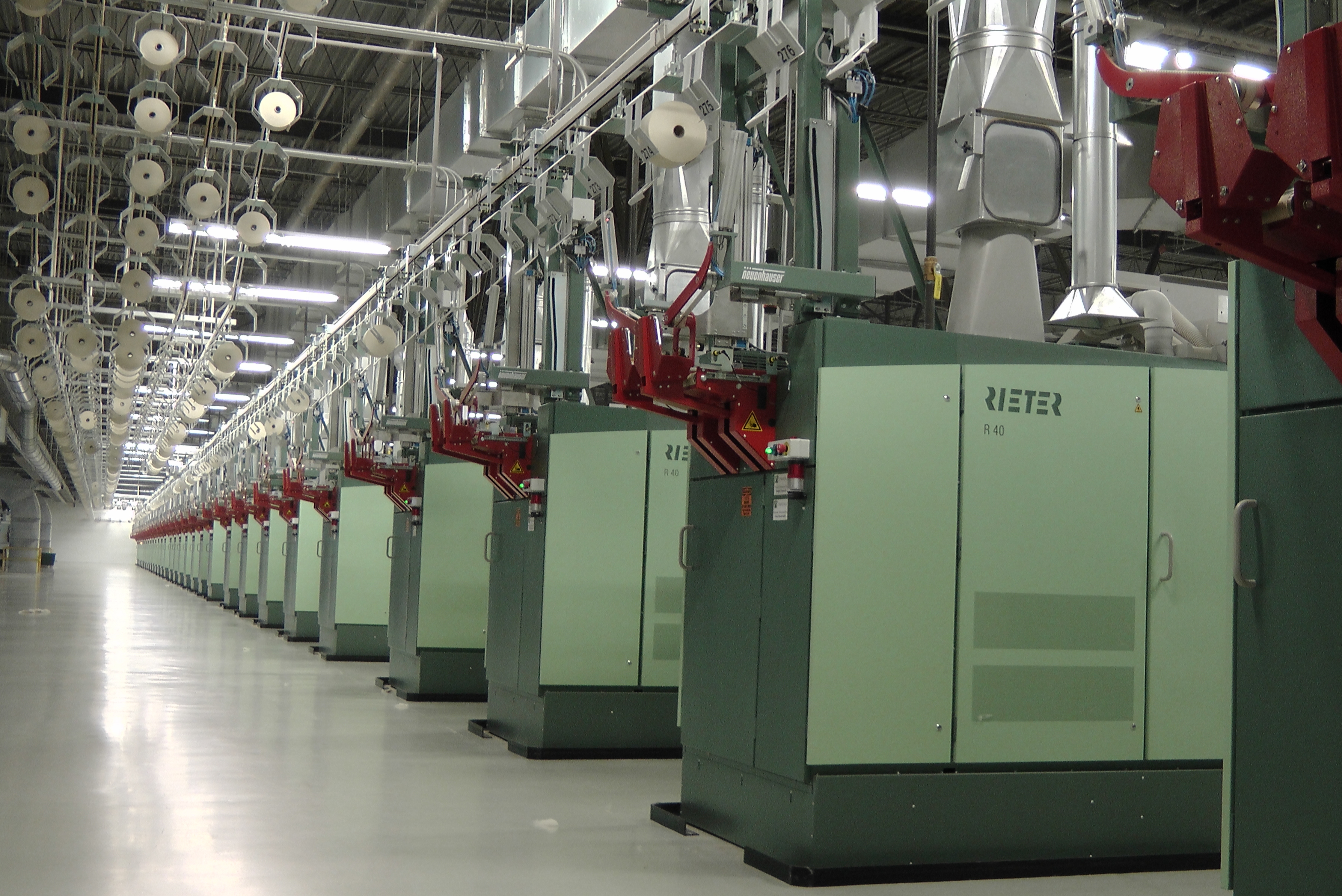
WL: “As automation became increasingly widespread in natural and chemical fibre spinning mills, it gave rise to an enormous leap in productivity. It was then a logical progression to build apparatuses and systems that used technology to enable them to handle the heavy, delicate bobbins for natural, chemical and carbon fibres. Accordingly, Neuenhauser developed the world's first fully automated handling system, called "AutoFlow", as early as 1985. AutoFlow was designed with a device for removing the bobbins from production machines that is now well known in the textile industry, called the lifter-doffer. But this was just the first step on the road to full automation. Over time, our group of companies developed other automated handling systems for the textile industry, including not only devices for removing BCF bobbins from the spinning or winding machines, but also for overhead transport, intermediate storage and automatic packaging of the bobbins. So we now support and monitor the entire manufacturing operation, all the way up to loading and shipping.”
WL: “Corporations like Welspun build gigantic production facilities, whose very manufacturing capacity on a daily basis poses problems: In terms of product quality as well as the greater need for human resources. This is further complicated by high turnover in personnel. Over the years, Neuenhauser has developed many automation projects for customers such as these, which have enabled them to prevail in a highly competitive environment.”
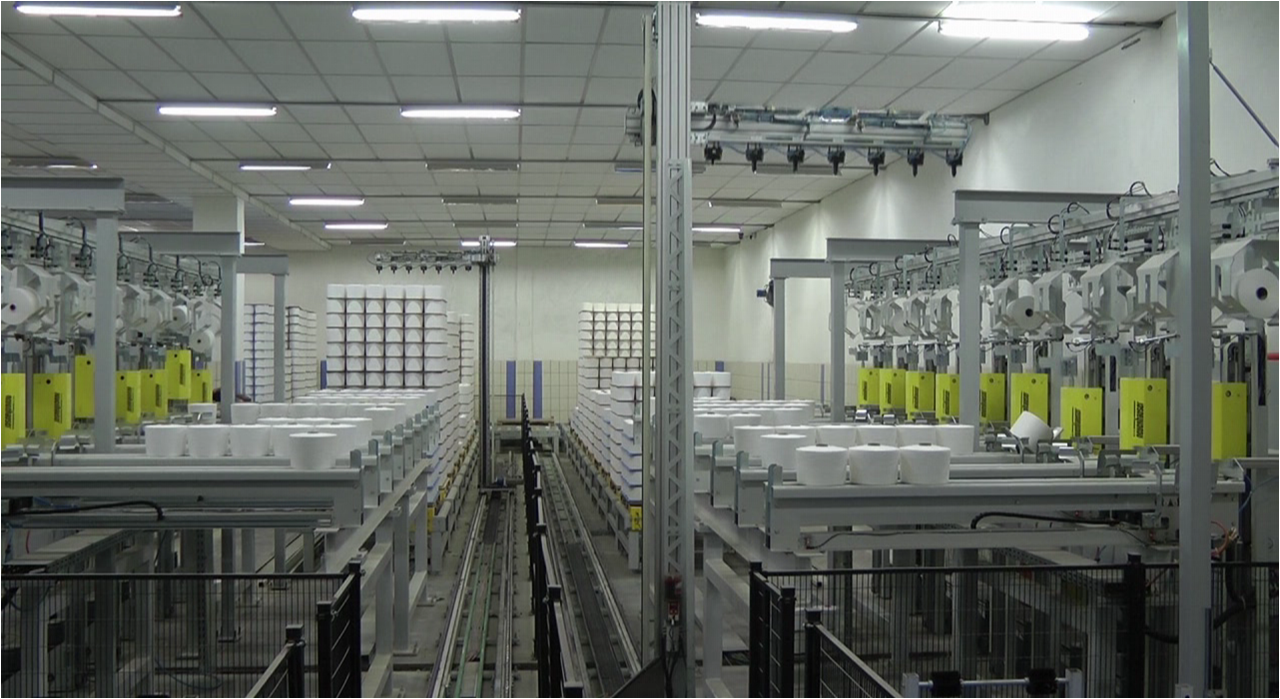
WL: “In our vision, automation has a far more complex role than is generally thought. Its purpose is not just to lower payroll costs, although this is also a decision making criterion as well. In fact, our chief consideration in this undertaking is to reduce the need for manual handling of bobbins and the problems arising therefrom to the barest minimum. In this way, we help our users to improve the quality of their products. But automated handling systems, called AHS for short, also provide them with other advantages, such as a safe, high-performance product flow through the entire plant configuration, or better use of factory space through compact machines and systems. They also help to maintain a clean, tidy and efficient manufacturing environment and a safe, ergonomically less burdensome workflow.”
“Neuenhauser is already considering Industry 4.0 for its future developments. But we have only just started. I believe that the economy will only become fully digitised in a series of many, many small steps.”
WL: “We have implemented CanTrac, a floor-based track system on which the cans containing the loose fibre strip are transported by means of a reciprocating "walking floor" mechanism from the combing the machines to the drawframes and then the roving frames. In the Welspun factory, overhead transport of roving bobbins is assured by TEXTRA. The system consists of closed profile rails, curves and switches which guide the trolley rollers. The trolley trains are driven directly by friction drive motors. An automatic bobbin doffer on the roving frame, that is to say a pre-spinning machine, transfers the bobbins to a trolley train, which then travels to a storage area or the spinning machine. When they arrive at the spinning machine, the full bobbins are inserted in the roving frame creel, replacing the empty tubes. The flexible link system makes it possible to transport different roving yarn qualities produced at the roving frames to any given spinning frame. Throughout the process, the control system ensures that the trolley train delivers the roving yarn to the right spinning frame.”
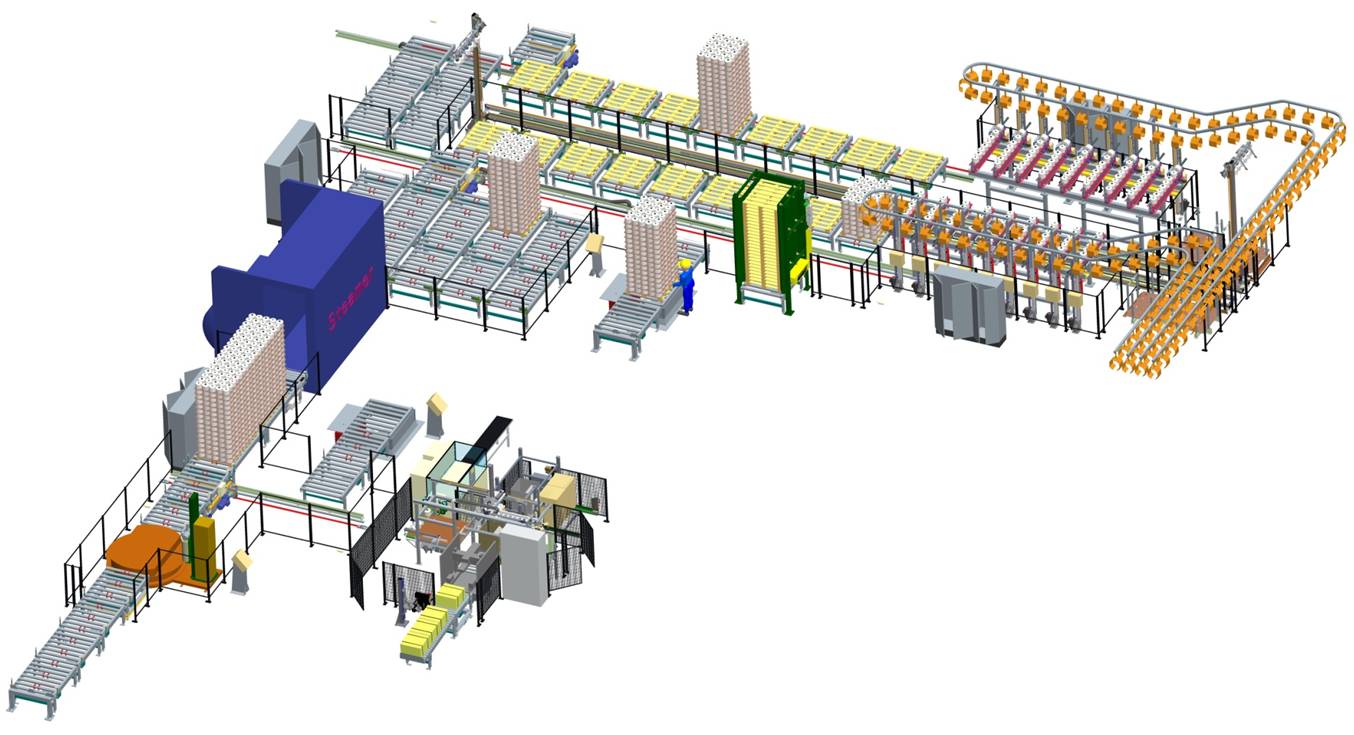
WL: “Finally, AutoFlow picks up the packages of finished yarn: The system at Welspun can manage over 1,000 packages per hour with more than 20 different articles simultaneously and transport them to their respective destinations with total reliability. For shipping, the packages are then either transferred to a palletizer or a carton packing system. The result for the customer is better bobbin quality due to the contactless material transport system; extremely short clearance times enhance the beneficial effects on the spinning and winding machines, and it is practically impossible for yarns to be misdirected.”
WL: “Digitisation of our plant equipment is already very advanced; workflow is completely computer-controlled. The relevant data can be retrieved via the human machine interface synchronously with production. We can already track the product back to the beginning of the manufacturing process. And all system components have been integrated in a higher-level plant management system.”
“We certainly still have a long way to go for Industry 4.0. Because as internet technologies are also introduced, the data will have to leave the factory. On this point, highest priority must be given to security. The networked products, machinery and systems will be able to interact with each other directly, and will render production considerably more efficient and more flexible. Customers and business partners will be involved even more closely in the ongoing processes. Industry 4.0 will also pave the way for many new developments, which we cannot even conceive of today.”
WL: “In Milan, we will exhibit new automation solutions for the automatic collection of packages from spinning machines and for palletizing and packaging.”

Business intelligence for the fibre, textiles and apparel industries: technologies, innovations, markets, investments, trade policy, sourcing, strategy...
Find out more